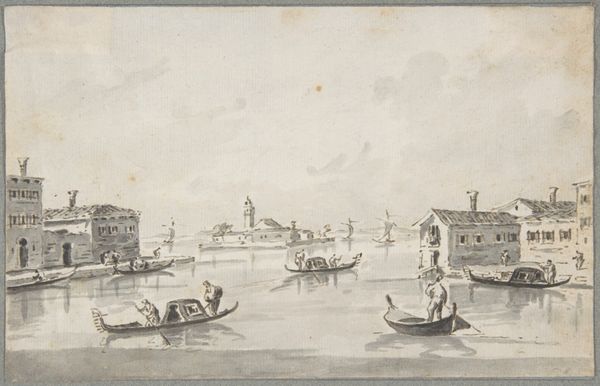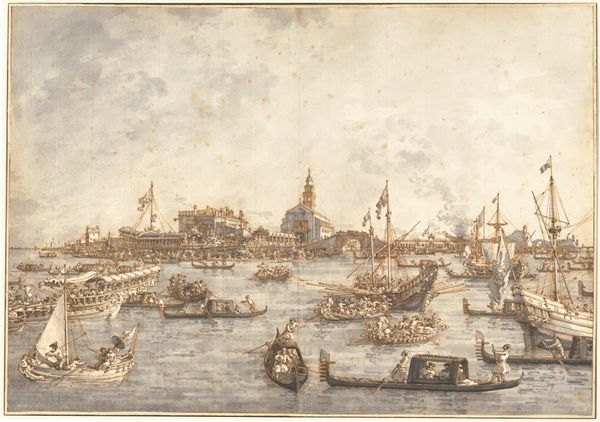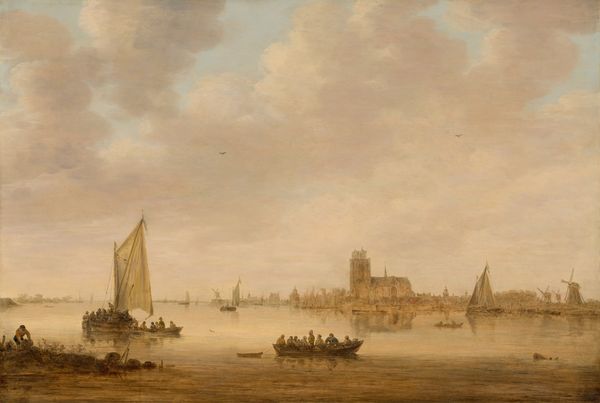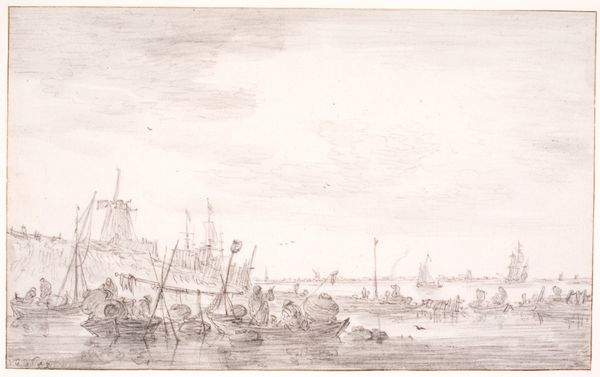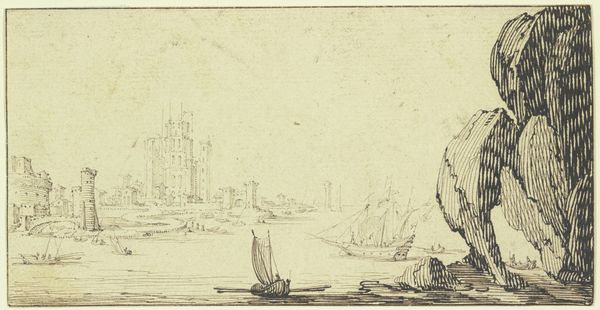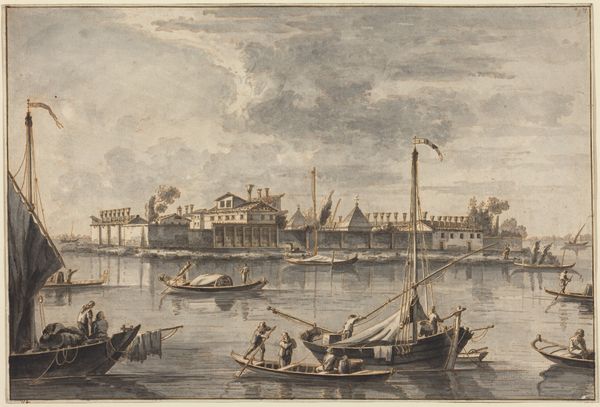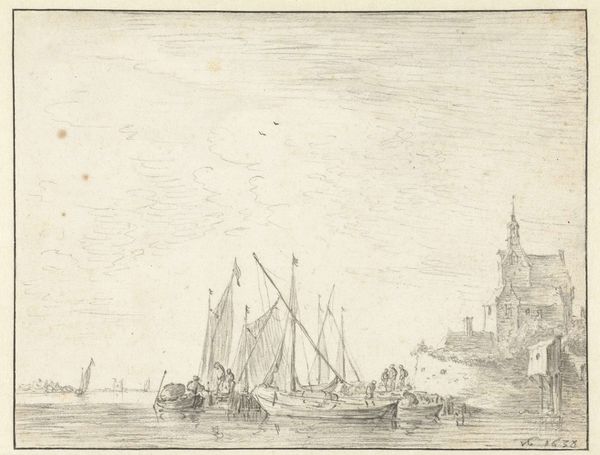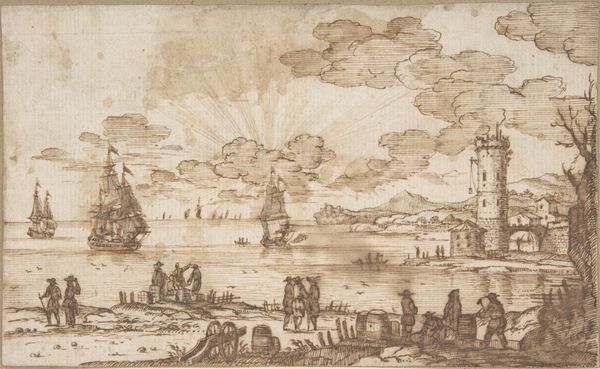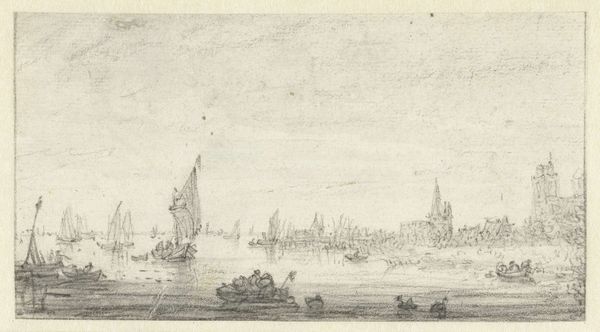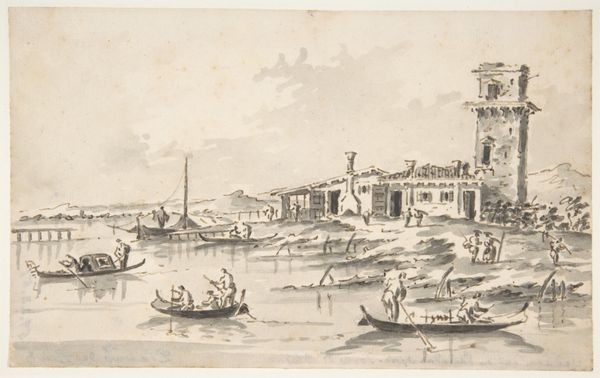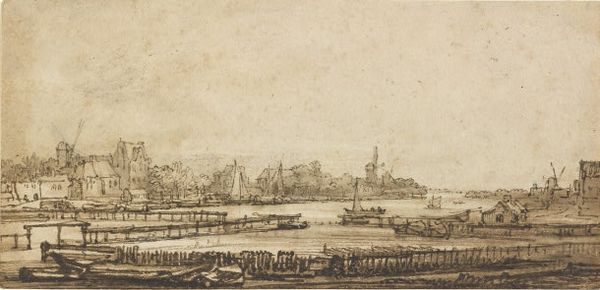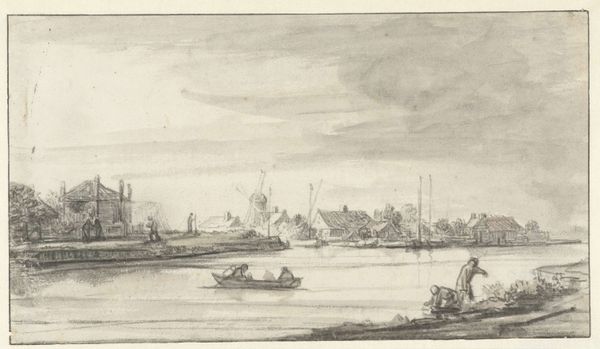
Copyright: Public Domain: Artvee
Editor: Here we have Francesco Guardi's "The Fortress of San Andrea from the Lagoon," an ink drawing from around 1780. It’s quite striking, isn’t it? The way the light catches the water makes it feel so expansive. How do you interpret this work from a formal perspective? Curator: Note how Guardi orchestrates spatial recession, pulling our gaze from the detailed foreground vessels to the distant, almost ethereal, fortress. The sepia ink contributes to tonal unity; the varying line weights implying depth, while the looser strokes indicate atmospheric perspective. What do you observe in the composition’s balance? Editor: I see what you mean; the weight is definitely on the left with the larger boat, but the tower in the center balances that somewhat. Is that intentional, to create tension in the piece? Curator: Indeed. Guardi uses asymmetry deliberately. The cluster of activity on the left contrasts with the openness on the right, thereby generating visual interest and directing our attention. The stark lines draw us in to appreciate that Venetian life and architecture simultaneously. How does Guardi incorporate rhythm into the overall composition? Editor: I guess, you see repetition of the boats creates a kind of visual rhythm, and the masts reach upward, breaking the horizon line in intervals? It's almost musical! Curator: Precisely. These vertical accents create an energetic cadence, enlivening the scene, without needing colour! It demonstrates a keen understanding of linear perspective and rhythmic composition that guides our reading of the landscape. So much form, and so much life. Editor: I hadn't thought of it that way. Focusing on the formal elements really opens up a different way of appreciating it. I now see how his specific lines are able to showcase energy with his artistic intention, thanks to you.
Comments
No comments
Be the first to comment and join the conversation on the ultimate creative platform.
